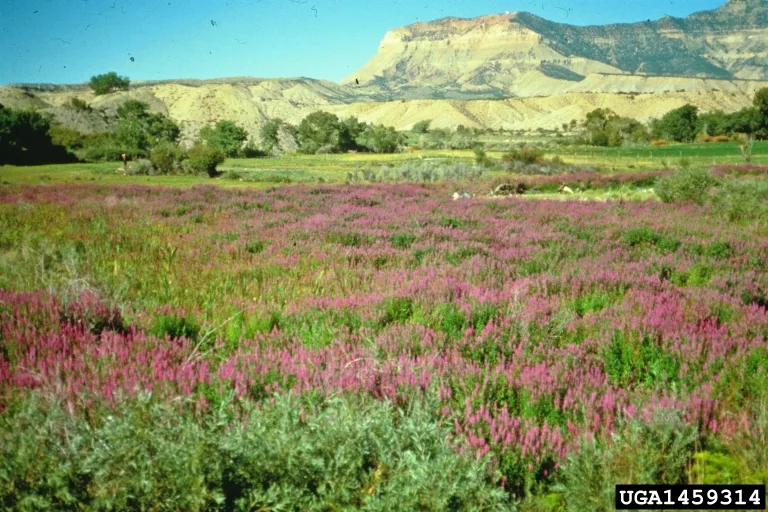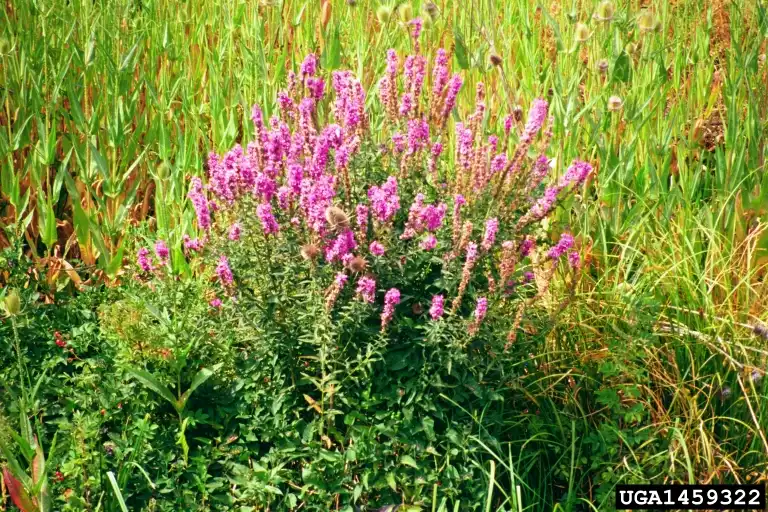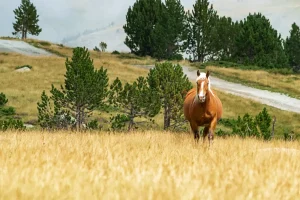
Purple loosestrife is an attractive perennial with magenta flowers that is a major threat to natural areas. Introduced in the early 1800s as an ornamental plant, it is classified as a List A semi-aquatic noxious weed. It also arrived unintentionally as a contaminant in ship ballast. We’ll discuss why this seemingly harmless flower is a serious invasive species in Jefferson County, CO.
Systematic Classification
Lythrum salicaria L.
| Kingdom | Plantae |
| Division | Magnoliophyta |
| Class | Magnoliopsida |
| Order | Myrtales |
| Family | Lythraceae J. St.-Hil. – Loosestrife family |
| Genus | Lythrum L. – loosestrife |
| Species | Lythrum salicaria L. |
Common Names: Purple loosestrife, Spiked loosestrife, Salicaire, Bouquet violet, Rainbow weed
This information is derived from the USDA Plants Database and United States Geological Survey.
Life Cycle and Identification
Purple loosestrife might seem harmless at first, but its life cycle reveals an aggressive strategy. During the first year, the seeds germinate in spring. It forms a low rosette of smooth leaves close to the ground. These early leaves don’t resemble the mature plant at all. During the second year, the plant undergoes a big transformation. Tall, square stems shoot up with stalkless leaves that decrease in size as they reach the top. During midsummer, the characteristic dense flower spikes (4-15 inches long) grow at the stem tips, showing individual flowers with 5-7 magenta petals.

Seed Production and Dispersal
Purple loosestrife is a major threat because it produces a massive amount of seeds. One plant can make around 2 million seeds. These seeds are very small and lightweight, so they can easily be carried by wind or flowing water. This allows the seeds to travel long distances and quickly establish new populations of purple loosestrife. Because of its ability to spread seeds, purple loosestrife has become a successful invader of many natural areas.
Impact on Jefferson County
Purple loosestrife is a threat found in 48 states, and may seem like a harmless wetland beauty with its magenta flowers. However, this invasive plant boasts a robust woody taproot system that allows it to form dense, suffocating patches. These stands crowd out all other vegetation, fundamentally altering the ecological structure of wetlands and making it difficult for native birds and animals to find food and shelter. In Colorado, this aggressive invader thrives below 5,500 feet elevation. Be aware of a common look-alike, fireweed (Chamaenerion angustifolium), which is a native wildflower found at higher elevations.
Purple Loosestrife Control Methods
For small infestations, manual removal is the most effective method. Target young rosettes in early spring before they flower and set seed. Remember to wear gloves and pull up the entire rosette, including several inches of the taproot. For larger areas, selective herbicides can be a good option. However, it’s best to consult a professional before using any chemicals.

Conclusion
Don’t let the pretty flowers fool you. Purple loosestrife is a major threat to wetlands in Jefferson County. Introduced as a garden plant, it chokes out native species and harms wildlife. While there are ways to control it, the key is to act early. By learning to identify purple loosestrife and reporting sightings, you can help protect our wetlands and the animals that depend on them.




